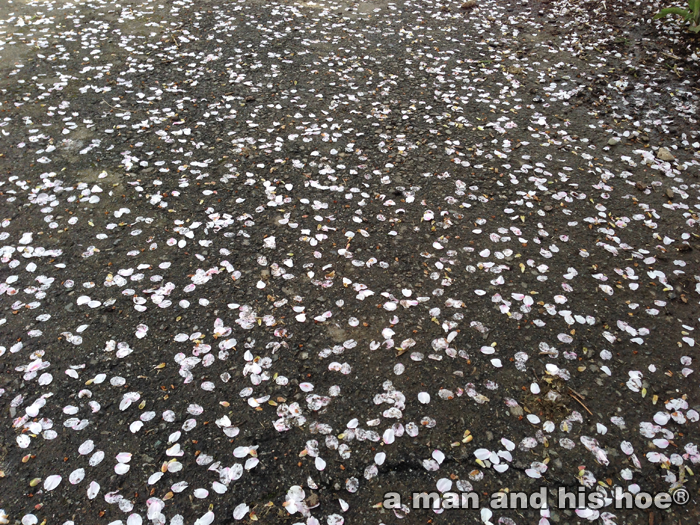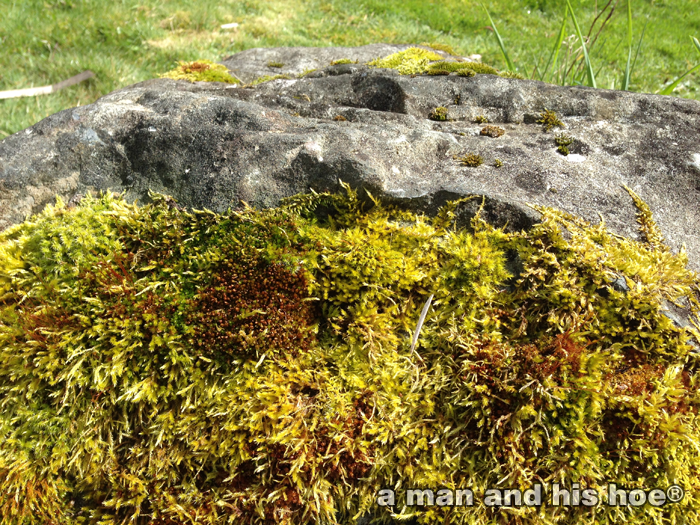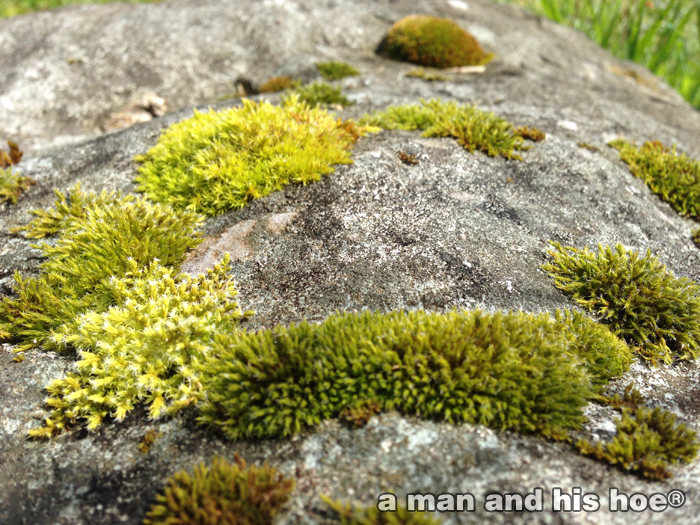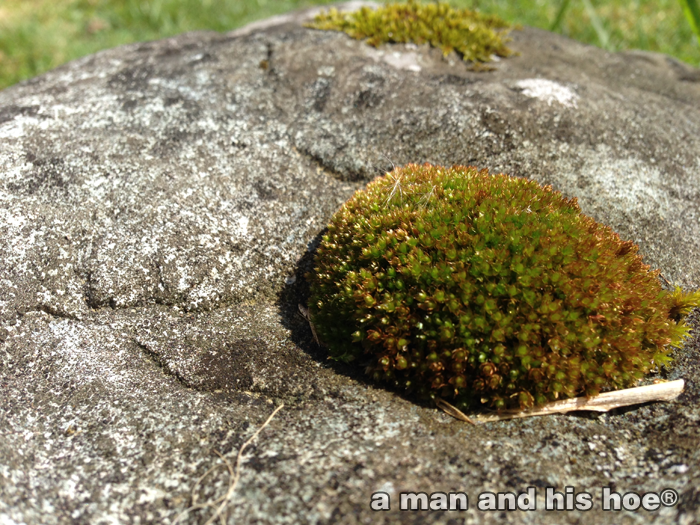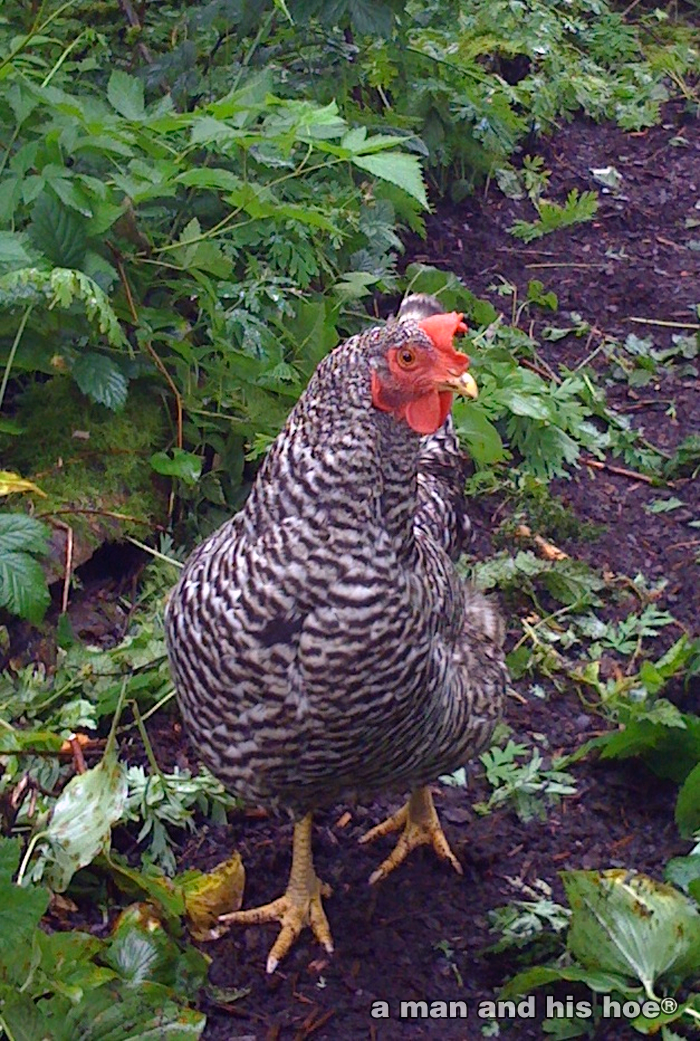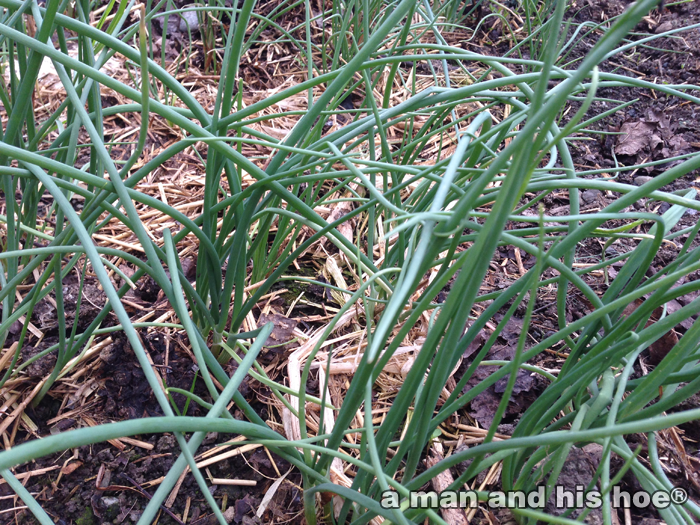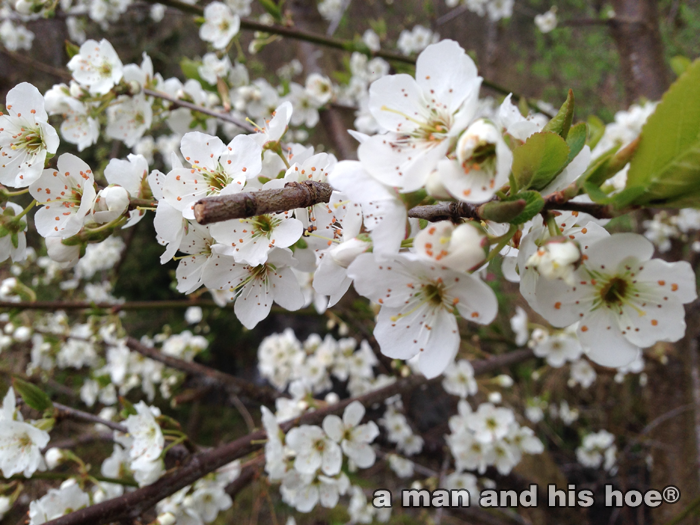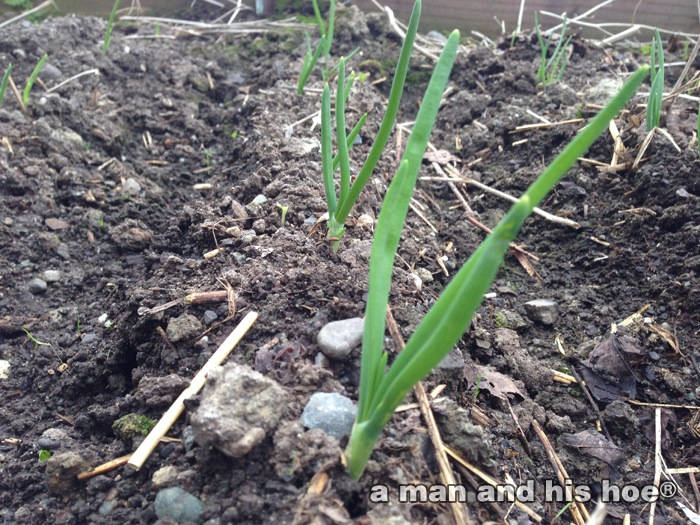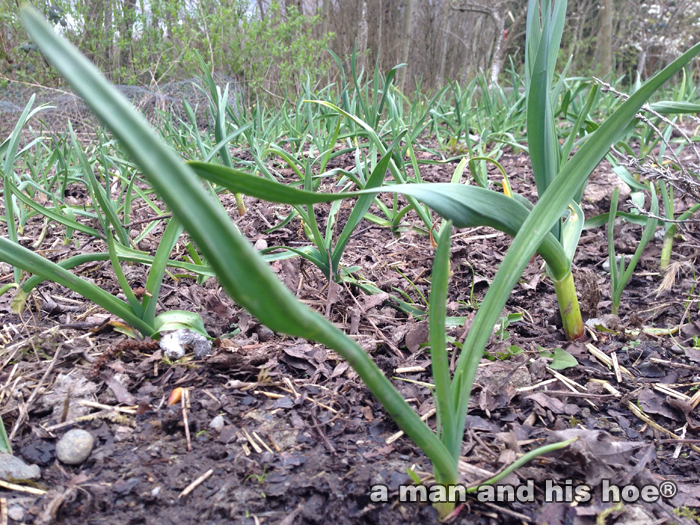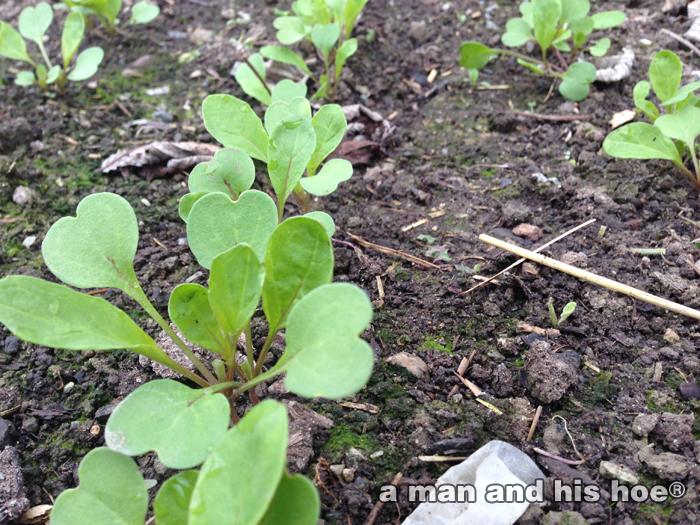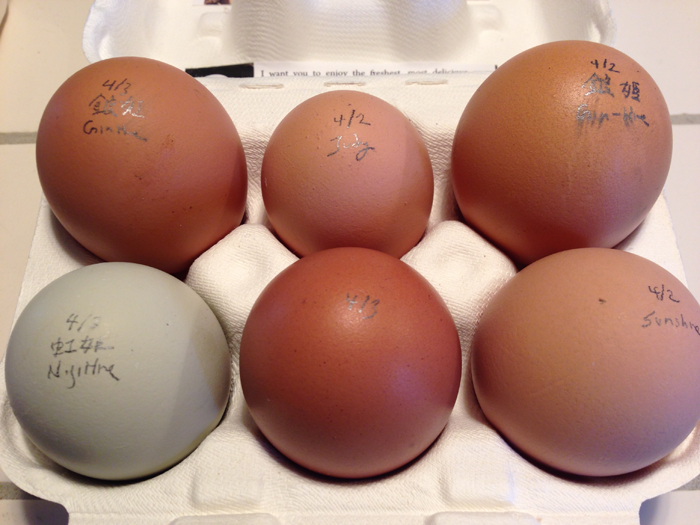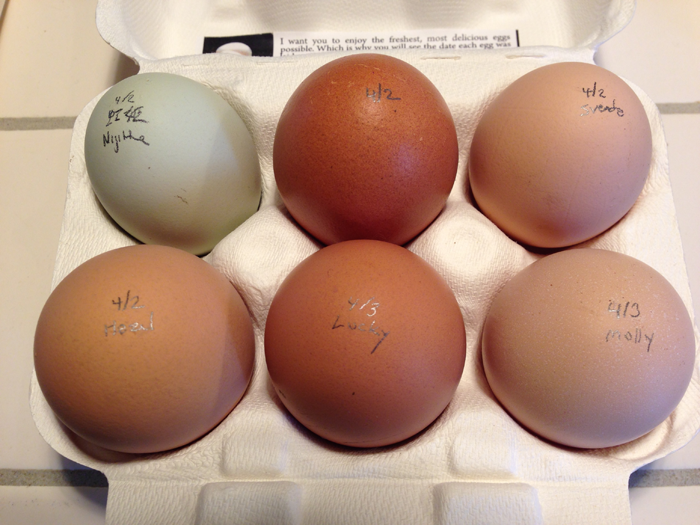[wpvideo I1o30ztf]
So what do chickens like to do? One thing they really like is to go hunting in the woods. The underbrush is full of good things to eat. Chickens evolved from red jungle fowl of southeast Asia. So it’s not surprising that chickens enjoy spending so much time in the woods. This is what chickens like to do. So why pack them by the tens of thousands into chicken houses where they never see the outdoors?
Here at a man and his hoe®, what the chickens want is paramount. It’s not about trying to produce the most eggs and meat at the lowest cost as possible. It’s about providing a farm where chickens experience the maximum amount of happiness. And after observing them for eight years, one of their favorite things to do is to spend hours in the woods. This is what humanely raised chicken look like. You can’t raise them humanely in a densely packed chicken house.
